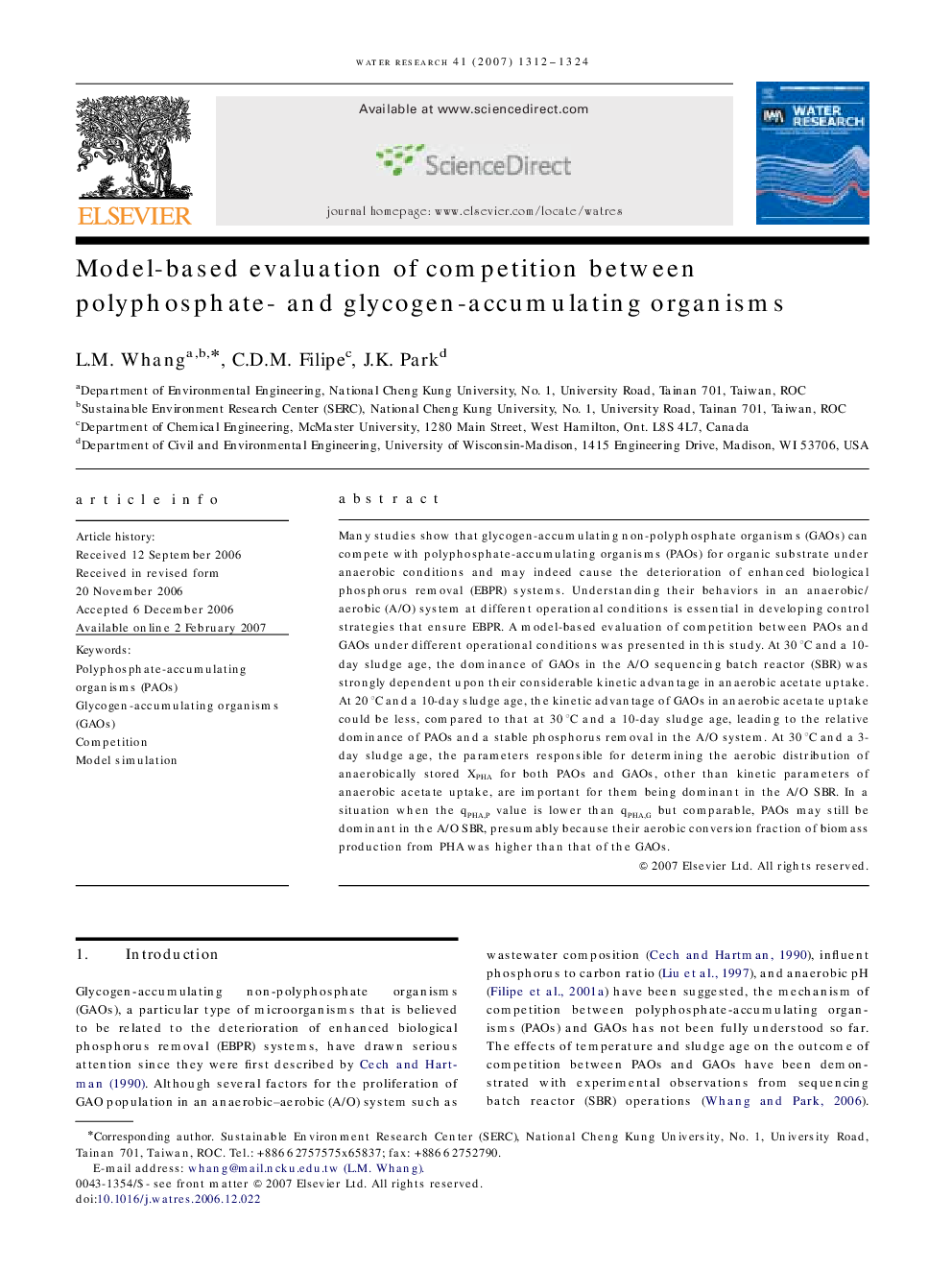| Article ID | Journal | Published Year | Pages | File Type |
|---|---|---|---|---|
| 4485418 | Water Research | 2007 | 13 Pages |
Many studies show that glycogen-accumulating non-polyphosphate organisms (GAOs) can compete with polyphosphate-accumulating organisms (PAOs) for organic substrate under anaerobic conditions and may indeed cause the deterioration of enhanced biological phosphorus removal (EBPR) systems. Understanding their behaviors in an anaerobic/aerobic (A/O) system at different operational conditions is essential in developing control strategies that ensure EBPR. A model-based evaluation of competition between PAOs and GAOs under different operational conditions was presented in this study. At 30 °C and a 10-day sludge age, the dominance of GAOs in the A/O sequencing batch reactor (SBR) was strongly dependent upon their considerable kinetic advantage in anaerobic acetate uptake. At 20 °C and a 10-day sludge age, the kinetic advantage of GAOs in anaerobic acetate uptake could be less, compared to that at 30 °C and a 10-day sludge age, leading to the relative dominance of PAOs and a stable phosphorus removal in the A/O system. At 30 °C and a 3-day sludge age, the parameters responsible for determining the aerobic distribution of anaerobically stored XPHAXPHA for both PAOs and GAOs, other than kinetic parameters of anaerobic acetate uptake, are important for them being dominant in the A/O SBR. In a situation when the qPHA,PqPHA,P value is lower than qPHA,GqPHA,G but comparable, PAOs may still be dominant in the A/O SBR, presumably because their aerobic conversion fraction of biomass production from PHA was higher than that of the GAOs.
